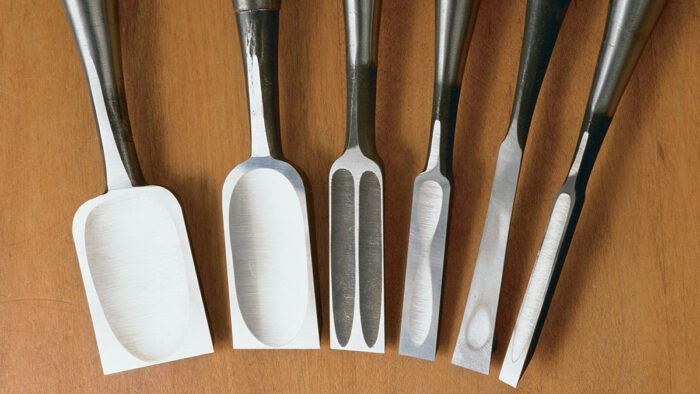Japanese Chisels
With proper preparation, Japanese chisels take and hold a superior edge.

Synopsis: William Tandy Young says the tool hype is true when it comes to Japanese chisels; the laminated steel blade of a Japanese chisel takes and holds an astounding edge. The distinctive hollow in the back of the chisel reduces its surface area, which makes it easy to flatten. Japanese chisels are compact and hefty. There are a lot of low-quality Japanese chisels available, and shares tips on selecting better quality ones. He explains how to get a new chisel ready to be used, from removing the coating to dressing the blade back.
I have a passion for chisels. But when I first encountered Japanese chisels, I wasn’t interested in them, despite the rave reviews. They were expensive and upkeep seemed too bothersome. Besides, how superior could they be to my Western chisels?
I eventually gave in to my curiosity about Japanese chisels and tried a few of them (see the photo on the facing page). For once, the tool hype is true: The laminated steel blade of a Japanese chisel takes and holds an astounding edge. The distinctive hollow in the back of the chisel reduces its surface area, which makes it easy to flatten the tool quickly and precisely.
Japanese chisels are compact and hefty. They’re ideal for striking with a hammer, and they allow you to keep your hands close to the work. They have a comfortable, balanced feel and offer superb control. Japanese chisels raise trimming and chopping to a more refined, intimate level.
Now I work regularly with both Western and Japanese chisels, and I wouldn’t want to be without either. By adding Japanese chisels to your tool kit, you can bring hand-tool performance to a new level. One word of warning, though: If you choose unsuitable Japanese chisels or you prepare them poorly, you will be disappointed.
Shop-worthy chisels
Though Japan is famous for high-quality goods, it also produces lots of cheap, inferior merchandise—chisels included. I have a few low-quality Japanese chisels that are brittle and unpleasant to work with. I wouldn’t recommend them to anyone at any skill level. Even if you’re just starting out, try to get decent chisels so that you’ll always enjoy using them, no matter how experienced you become.
Quality can be a hard thing to figure, though. From rare and exotic to common and cheap, Japanese tool quality is wide-ranging. It’s hard to keep track of all the various names, steels, forging methods and toolmakers’ reputations.
Japanese wholesalers and exporters add to the confusion by routinely changing the brand names of tools. The same Japanese chisel might be sold under several different labels in the West.

From Fine Woodworking #115
To view the entire article, please click the View PDF button below:
Fine Woodworking Recommended Products

Suizan Japanese Pull Saw

Tite-Mark Marking Gauge

Olfa Knife







Log in or create an account to post a comment.
Sign up Log in